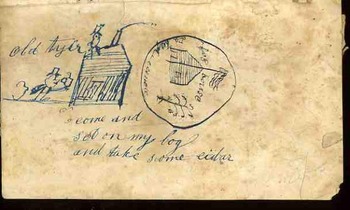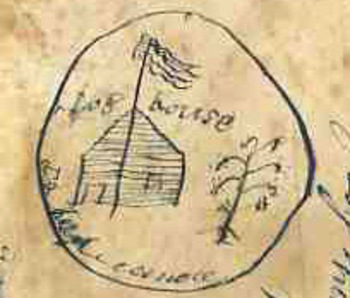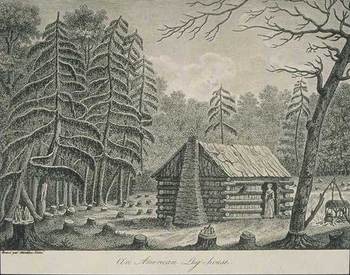JF Ptak Science Books Post #127

Here is an example of a beautiful, achingly simple, drawing of two log cabins by a child, and done around 1830. I absolutely adore antiquarian manuscript artwork of children. The observations are pure and simple, and reminds me of what my children draw, except of course for the subject matter. The work of children from 125 years or more ago is really quite difficult to find: the writing and practice material of choice was in general absolutely ephemeral, taking place on a chalk board to save on paper and writing implements, as paper was far more expensive pre-1850 than it is today. To further complicate things a family would have to actually save the art for four generations so that one could find it today, which is asking a lot from your family. Most of the time the surviving artwork comes in two ways: in the form of a notebook, which has survived through the years intact; and as incidental artwork jotted down on the free end papers in textbooks. In any event, the art is hard to find.
The drawing has two elements: the first shows a man approaching a house, an dis titled “Old Tyler”; to its right and on it side is the glorious image, “Log House”, complete with a flag on a flagpole and a little aphorism:
“Come and
Set on my log
And take some cider”.
This is just simple a super bit of naïve childhood Americana.
Here is another image of frontier life in the US int he early 19th century, though this one, from George Collot's Voyage dans l'Amerique Septentrionale, published in 1826, around the time, I reckon, that the child (above) was making this drawing, but is of course iconic and was distributed, unlike our young artist, whose drawing living only on for him and whoever the child might have shared it with. I believe that the Collot image of the famous American log house is one of the earliest ever published. It is a gorgeous image and speaks to the spirit and humble pride of the folks who lived there.





Comments